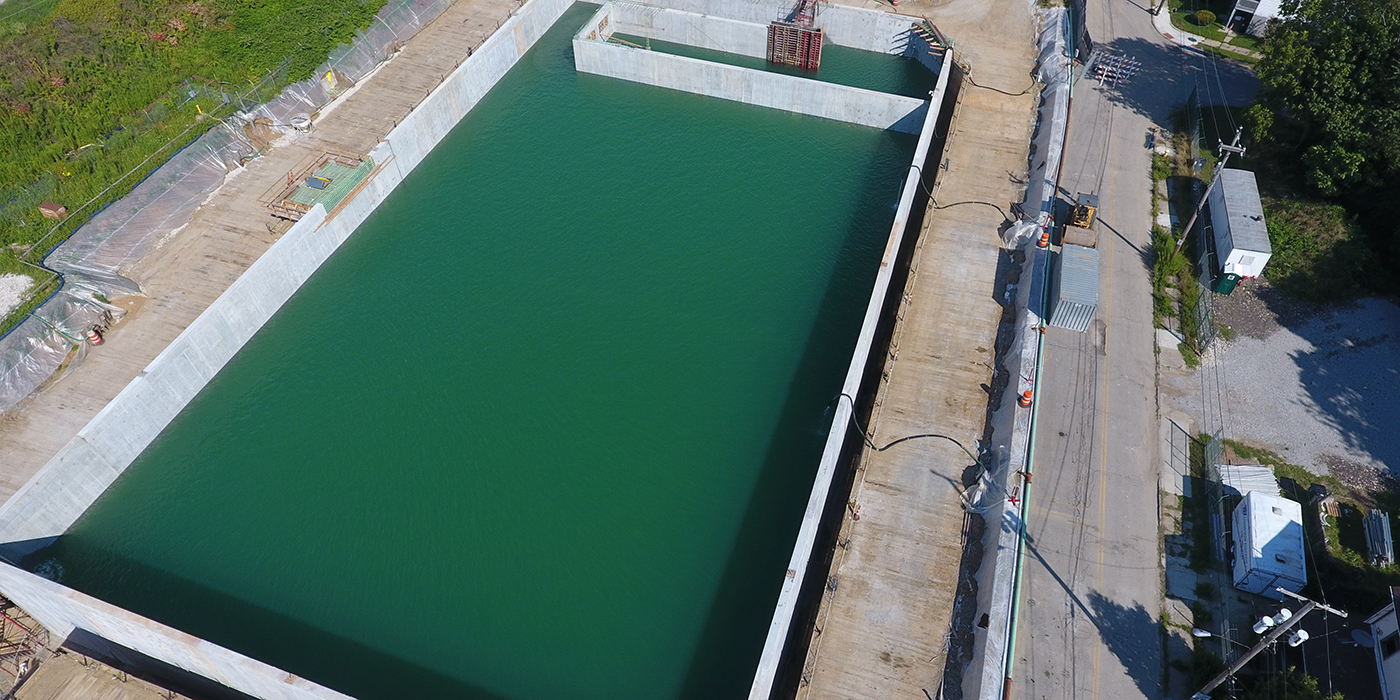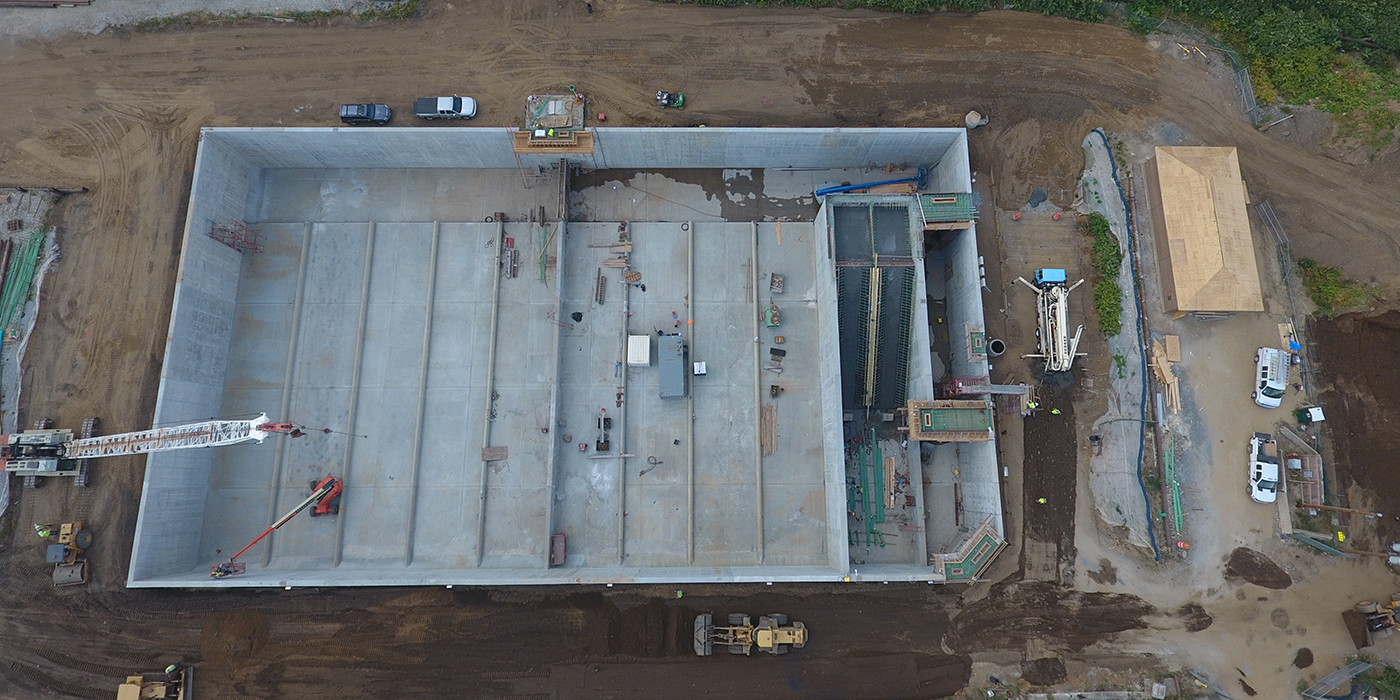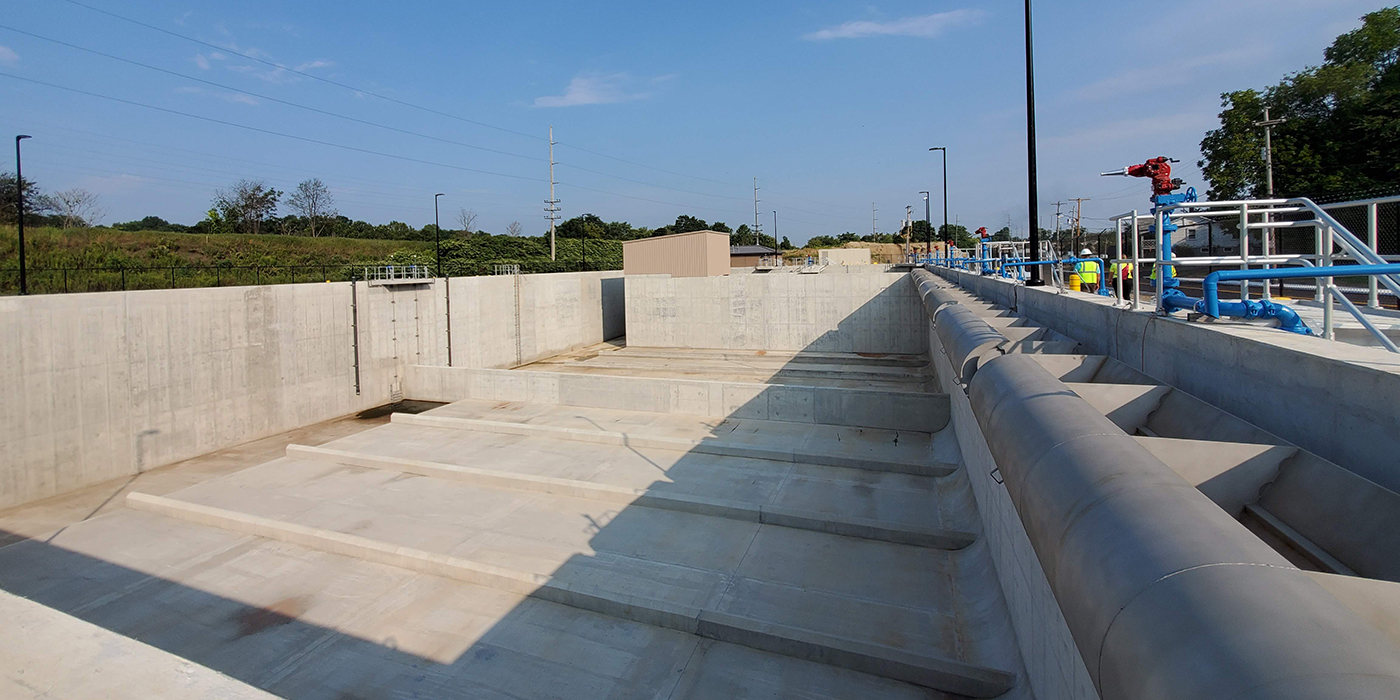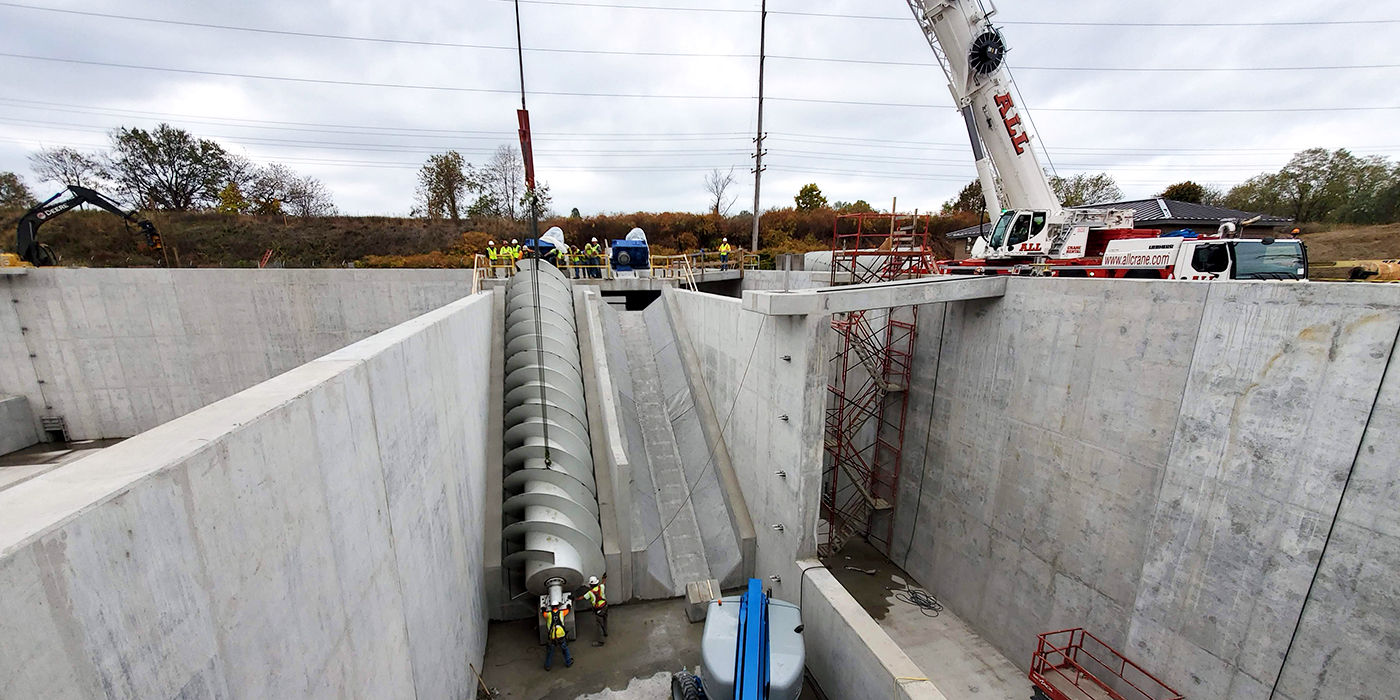Hazel Storage Basin
Challenge
When Akron's long-term control plan was updated, a larger storage basin with a new location was needed to meet the community's needs.
Services Involved
- Architectural Design
- Combined Sewers
- Environmental Planning
- Long Term Control Plan (LTCP)
- Sewage Collection, Treatment, and Disposal
- Structural Design
- Structural Engineering
- Survey
- Unmanned Aerial System
- Wastewater
- Water Resource Engineering
Awards
2020 Project of the Year Award (Durability)
Slag Cement Association (SCA)
Hazel Storage Basin
The City of Akron’s Long Term Control Plan (LTCP) update required the construction of a single storage basin (known as the “Hazel Storage Basin”) to achieve zero overflows within the adjusted typical year.
When the LTCP was updated, the minimum required storage volume to achieve this goal was approximately 2.5 million gallons.
Since the LTCP update, the recalibration of Akron’s hydraulic model of its sewer system has increased the required size of the basin to 3.6 million gallons.
After recent work with Akron’s Integrated Plan, the volume further increased to 4.5 million gallons. This increase optimizes the available capacity within the downstream Little Cuyahoga Interceptor (LCI).
DETERMINING THE HAZEL STORAGE BASIN LOCATION
Because of the size increase, the originally proposed area was not large enough to accommodate the increase in basin volume.
Seven locations were evaluated to select a new site. Alternative conveyance methods, such as gravity sewers, remote pump stations, siphons, and influent pumping at the basin were all considered. Each alternative configuration was then numerically rated to determine the best site. Considerations included impacts to local businesses, traffic and the community, as well as design, construction, and operational considerations.
SELECTING A NEW BASIN CONFIGURATION
Ultimately, a hybrid basin configuration was selected. The hybrid basin configuration allows the basin to partially fill by gravity for 27 of the 33 events during the Typical Year that the city’s model predicts the basin will be activated.
Additionally, two 300-horsepower screw pumps have been designed to fill the basin completely during larger storm events.
ADDITIONAL COMPONENTS OF THE PROJECT
New sewers were also required as part of the Hazel Storage Basin project. The new sewers convey flow from the existing collection system to the basin, and eventually to the Little Cuyahoga Interceptor sewer. The new sewer system includes the construction of 78-inch, 48-inch, 36-inch, and 30-inch diameter sewers.
The Hazel Storage Basin project also includes rehabilitation of the existing sewers related to the Hazel Storage Basin and lining the Little Cuyahoga Interceptor sewer.
PRACTICAL UTILIZATION OF UNMANNED AERIAL SYSTEMS
Due to large stockpiles of materials present on the site, the project could not be safely surveyed by conventional methods. Working around this issue, the survey team placed ground control and flew the site with their DJI Inspire 2 Drone (unmanned aerial system).
ms produced the data in Pix4D to create a point cloud from the digital imagery. The point cloud was converted to a working surface the designers used in AutoCAD Civil 3D. The team was able to perform volumetric calculations for the amount of the material that needed removed during construction.




